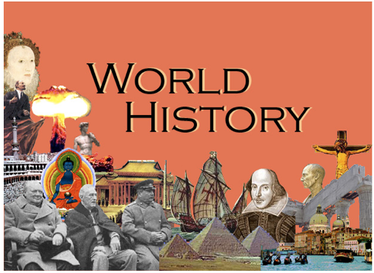ia-planning-sheet
RQ Proposal
Writing an RQ
What is the Internal Assessment? 
* It is an investigation into a historical question you have written yourself.
* It must be a maximum of 2200 words long.
* If you are a SL student it is worth 25% of your final grade
* If you are a HL student it is worth 20% of your final grade.
What topic should I choose?
Standard Level
You have the choice of any worthwhile History topic. There are no limits to your choice. However you should consider:
- Am I interested in it?
- Are there enough resources for me to conduct thorough research?
- If it matches the syllabus there could be a question on it in the exam
- Is there an issue or problem to research which would help to shape the research question?
Higher Level
You should choose from the three Higher Level syllabus sections for Asia that we study. The guidelines are below:
A. China and Korea (1910–1950)
This section focuses on China and Korea between 1910 and 1950. It examines the rise of nationalism and communism in China after the establishment of the Chinese Republic, as well as the nature of Japanese rule of Korea, which had been formalized with the annexation in 1910, and which became more oppressive during the years of the Sino-Japanese War. The section concludes by examining the reasons for the victory of the communists in the Chinese Civil War and the consequences of this defeat for the nationalists.
• Rise of national identity in China: Yuan Shikai; Sun Yixian; 21 Demands (1915); new culture movement;
Treaty of Versailles (1919); May Fourth movement (1919); effects of warlordism
• Nationalist rule of China: Guomindang leadership and ideology; Jiang Jieshi; successes and failures of domestic policy during the Nanjing decade (1927–1937)
• Rise of communism in China: Chinese Communist Party (CCP) ideology; First United Front; Shanghai massacre (1927); Yan’an; Jiangxi Soviet; Long March; Mao Zedong
• Impact of Japanese invasion of China; Manchuria (1931); Second United Front; Sino-Japanese War (1937–1945); Chinese Civil War (1946–1949); nature of conflict; reasons for communist victory
• Impact of Japanese rule of Korea: social, political and economic effects of annexation (1910); impact of the Sino-Japanese War on Korea: Japanese use of forced labour, conscription and comfort women; division of Korea at 38th parallel (1945); Syngman Rhee; Kim Il-Sung
• Taiwan and Republic of China (ROC): nature of Jiang Jieshi’s rule: martial law (1949); White Terror (1950); beginnings of Taiwanese independence movement
B. The People’s Republic of China (1949–2005)
This section focuses on China under the rule of the Chinese Communist Party, and the great changes as the Communist Party under Chairman Mao Zedong (Mao Tse-tung) extended its rule and Mao’s vision of a socialist state. The focus of this section is on the impact of domestic political, social and economic policies. It also examines modernization of China’s economy since Mao’s death.
• Consolidation of the communist state (1949–1961) under Mao Zedong; key policies; land reforms; rectification campaigns; Hundred Flowers campaign (1956)
• Transition to socialism; successes and failures in economic developments (1949–1961); First Five-Year Plan; Great Leap Forward; Second Five-Year Plan
• Social developments; women’s rights; health; education
• Great Proletarian Cultural Revolution: causes; Gang of Four; political, social and cultural impact
• Foreign policy and foreign affairs 1949–1976; Sino-American relations; establishment and breakdown of Sino-Soviet relations; China as a regional and global power
• Power struggle following the death of Mao Zedong; Hua Guofeng, the re-emergence of Deng Xiaoping and the defeat of the Gang of Four
• China under Deng Xiaoping (1976–1997); economic developments; Four Modernizations; political developments; causes and effects of Tiananmen Square (1989); Jiang Zemin
C. Cold War Conflicts in Asia
IA Samples (2017 Guide)
IA Sample: The White Terror in Taiwan after 1945 (Scored 20 out of 25)
IA Sample: Chinese Participation in the Korean War (Scored 17 out of 25)
IA Sample: The Japanese Economic Miracle (Scored 18 out of 25)
Support materials
- This pdf contains a lot of advice and suggestions for completing the IA. It is from one of our textbooks: ia-guidance-and-support (Keely and Rogers, (2015), The Move to global War, OUP: UK)
2. This document gives advice about what to look for when evaluating sources: Help with OPCVL